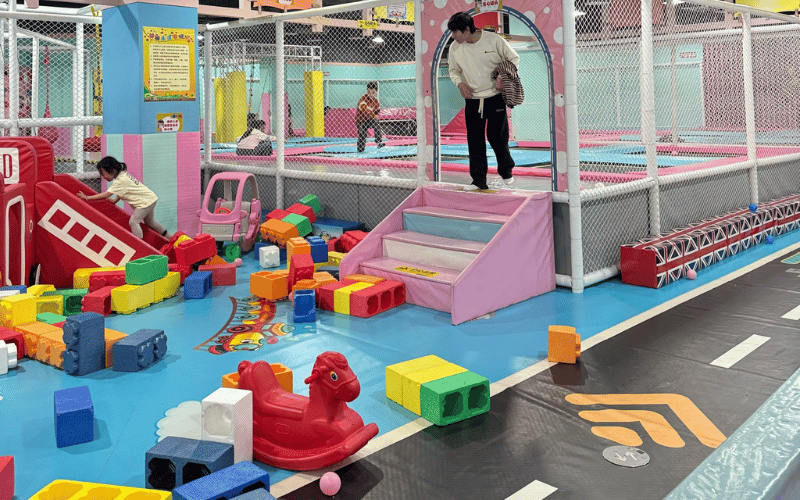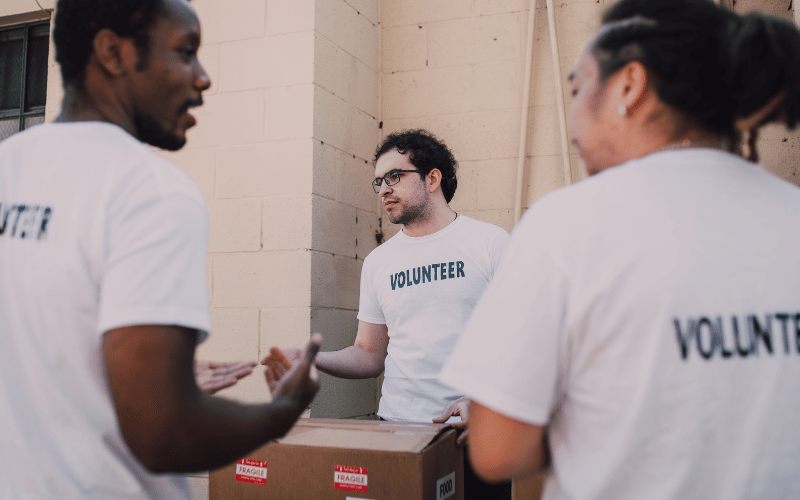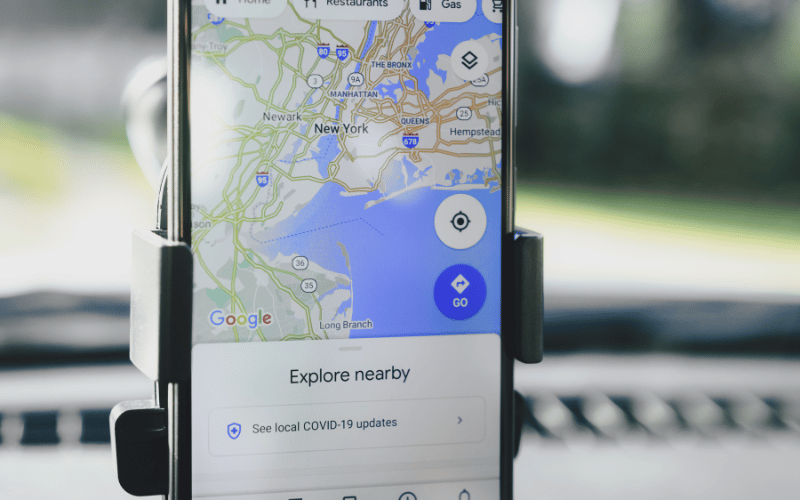Starting an indoor playground business with zero capital might sound impossible, but it’s more achievable than you think. Parents everywhere are searching for affordable, engaging activities to keep their children active and entertained, and indoor playgrounds meet this growing demand perfectly. These spaces offer a safe, weatherproof environment where kids can play, socialize, and burn off energy, making them a hit in communities of all sizes.
The key to launching this type of business without upfront investment lies in resourcefulness and creativity. You don’t need a massive budget to get started—you need a clear vision and the ability to leverage what’s already available. For example, you can partner with local community centers or schools to use their underutilized spaces. You can also explore crowdfunding platforms or seek sponsorships from local businesses that want to support family-friendly initiatives. By thinking outside the box, you can turn your idea into a reality without draining your bank account.
I’ve worked with aspiring entrepreneurs who felt stuck because they lacked funding. But I’ve seen how a well-thought-out plan and a willingness to collaborate can open doors. This guide will walk you through the steps to start your indoor playground business, focusing on practical strategies that don’t require a large financial investment. Whether you’re a parent, a teacher, or someone passionate about creating a fun space for kids, you’ll find actionable advice to help you get started. Let’s dive into how you can build a thriving indoor playground business from the ground up—without spending a dime upfront.
Table of Contents
ToggleThe Foundation: Planning Without Financial Investment
Starting an indoor playground business with zero capital requires a solid foundation built on strategic planning and resourcefulness. By focusing on creative solutions and leveraging existing opportunities, you can turn your vision into a reality without breaking the bank. Let’s explore the essential steps to lay the groundwork for your business.
Defining the Zero-Capital Indoor Playground Concept
To succeed without financial investment, you need to rethink the traditional indoor playground model. Focus on minimizing overhead by starting small and targeting niche markets. For example, consider offering mobile party services where you bring portable play equipment to clients’ homes or event venues. Alternatively, explore pop-up play areas in community centers, libraries, or even outdoor spaces during favorable weather. These approaches allow you to test the market and build a customer base without committing to a permanent location or high fixed costs.
By narrowing your focus to a specific niche, you can differentiate your business and attract a loyal audience. For instance, a pop-up sensory play area for toddlers or a mobile STEM-themed playground for older kids can cater to underserved markets while keeping your initial investment low.
Market Research on a Budget
Understanding your target market is critical, and you don’t need expensive tools to gather valuable insights. Start by identifying high-demand, low-supply areas for children’s activities. Look for neighborhoods with a high concentration of young families but limited options for indoor play.
Use free tools like Google Trends to analyze search interest in terms like “indoor playground near me” or “kids’ activities.” Social media polls can also provide direct feedback from parents in your community. Additionally, study your competitors—examine their pricing, services, and fixed costs to identify gaps you can fill. For example, if local competitors charge high fees for birthday party packages, you could offer a more affordable, mobile alternative.
Crafting a Lean Business Plan
A lean business plan focuses on operational and marketing strategies that require minimal investment while maximizing impact. Start by outlining your core services, such as mobile play setups or pop-up events, and detail how you’ll execute them using existing resources. For instance, you can rent or borrow play equipment initially rather than purchasing it outright.
Flexibility and scalability should be at the heart of your plan. Design your business model to adapt to changing customer needs and grow as you generate revenue. For example, you might begin with a single mobile play unit and expand to multiple setups or a permanent location once you’ve established a steady income stream.
By focusing on these foundational steps, you can build a strong, zero-capital indoor playground business that meets the needs of your community while positioning yourself for long-term success.
Start here. Setting Up Without Spending
Launching an indoor playground business without capital requires ingenuity and a willingness to think outside the box. By creatively securing a location, sourcing equipment, and ensuring safety and compliance, you can establish a functional and appealing play space without significant upfront costs. Let’s break down how to make this happen step by step.
Securing a Location Creatively
Finding a location doesn’t have to involve expensive leases or long-term commitments. Instead, look for shared spaces that align with your target audience. Community centers, churches, and local businesses often have underutilized areas that can serve as temporary or part-time play spaces. For example, a church hall that sits empty during weekdays could transform into a vibrant play area for toddlers.
When approaching potential partners, propose revenue-sharing agreements or service exchanges. For instance, you could offer a percentage of your earnings or provide free play sessions for their members in exchange for using their space. This approach minimizes your financial risk while building goodwill within the community.
Sourcing Equipment and Supplies
Acquiring play equipment doesn’t have to drain your resources. Start by exploring consignment shops, rental services, or donation programs to obtain what you need. Many parents are eager to donate gently used play items their children have outgrown, especially if they know it will benefit the community.
Refurbished or second-hand equipment can also provide significant cost savings. Look for items like soft play mats, climbing structures, or sensory toys that are simple, safe, and portable. For example, a set of foam blocks or a collapsible ball pit can create an engaging play environment without requiring a permanent setup. Prioritize quality and safety over quantity—fewer, well-maintained items will serve your business better than a cluttered space filled with worn-out equipment.

Safety and Compliance on a Budget
Safety and compliance are non-negotiable, even when working with limited funds. Start by establishing clear safety protocols, such as regular equipment inspections, proper cleaning schedules, and supervised play sessions. These measures not only protect children but also build trust with parents.
Liability insurance is essential, but you can manage costs by choosing a policy with installment payment options. Many insurers offer flexible plans tailored to small businesses, so shop around to find one that fits your budget.
For permits and licenses, research low-cost compliance solutions. Some local governments offer reduced fees or expedited processing for small businesses or community-focused initiatives. Reach out to your local small business development center for guidance on navigating these requirements efficiently.
By creatively securing a location, resourcefully sourcing equipment, and prioritizing safety and compliance, you can set up your indoor playground business without spending a fortune. These steps ensure you’re ready to welcome families into a safe, engaging, and affordable play space.
Building a Team Without Monetary Compensation
Starting an indoor playground business without capital means you’ll need to rely on creativity and resourcefulness to build a team. By recruiting volunteers, bartering for skills, and establishing a lean management structure, you can assemble a capable group of people who share your vision and are motivated by more than just a paycheck. Let’s explore how to make this happen effectively.
Recruiting Volunteers
Volunteers can be the backbone of your business in its early stages, but finding the right people requires a strategic approach. Start by tapping into your local community through events, schools, and social media platforms. For example, you could set up a booth at a community fair to share your vision and recruit parents, students, or retirees who are passionate about creating a safe and fun space for children.
When reaching out, emphasize the benefits of volunteering, such as gaining community service hours, building experience for future job opportunities, or simply contributing to a meaningful cause. For instance, high school or college students studying education or child development might see this as a valuable opportunity to gain hands-on experience. Make it clear how their involvement will make a tangible impact, both for the community and for their personal growth.
Bartering for Skills
If you can’t pay for professional services, consider bartering to access the expertise you need. For example, you could trade free playtime for a graphic designer who creates your logo and marketing materials or offer a family membership to an accountant who helps you manage your finances.
Be specific about what you need and what you can offer in return. For instance, if you need help setting up a website, approach a local web developer and propose a trade: they build your site, and you provide their family with free access to your playground for a set period. This approach not only saves money but also builds relationships with skilled professionals who may continue to support your business as it grows.
Creating a Lean Management Structure
Even with a small team, efficiency is key. Clearly define roles and responsibilities to ensure everyone knows what’s expected of them. For example, assign one volunteer to oversee daily operations, another to handle marketing and outreach, and a third to focus on safety and maintenance.
Keep communication open and regular. Weekly check-ins or team meetings can help address challenges, celebrate successes, and keep everyone aligned with your goals. By creating a lean but organized management structure, you can maximize the impact of your team’s efforts and ensure your business runs smoothly.
By recruiting volunteers, bartering for skills, and establishing a clear management structure, you can build a dedicated team without monetary compensation. These strategies allow you to focus on growing your business while fostering a sense of community and shared purpose.

Funding Alternatives: Generating Capital Without Personal Investment
Starting an indoor playground business without personal investment doesn’t mean you have to operate without funding. By exploring creative funding alternatives like pre-selling, crowdfunding, micro-grants, and vendor negotiations, you can generate the capital needed to launch and grow your business. Let’s break down these strategies in detail.
Pre-Selling and Crowdfunding
Pre-selling is a powerful way to generate funds while building excitement for your business. Offer memberships, discounted packages, or exclusive experiences to families before your playground officially opens. For example, you could sell a limited number of “founding family” memberships that include perks like early access to the playground, free birthday party bookings, or discounted rates for a year. This approach not only raises capital but also creates a sense of community and loyalty among your first customers.
Crowdfunding platforms like Kickstarter or GoFundMe can also help you raise money while showcasing the community benefits of your business. Create a compelling campaign that highlights how your indoor playground will provide a safe, fun, and affordable space for children. Include visuals, testimonials, and a clear breakdown of how the funds will be used. For instance, explain that $5,000 will go toward purchasing play equipment, while $2,000 will cover initial marketing efforts. Offer tiered rewards for backers, such as free play sessions, branded merchandise, or recognition on a “wall of supporters” in your playground.
Applying for Micro-Grants
Micro-grants are another excellent funding source, especially for small businesses with a community focus. Research local grants offered by government agencies, nonprofit organizations, or private foundations that support child-focused initiatives or small business development. For example, some municipalities offer grants to businesses that promote family-friendly activities or revitalize underutilized spaces.
When applying for grants, emphasize the social impact of your business. Highlight how your indoor playground will address a specific need in the community, such as providing affordable activities for families or creating a safe space for children to play. Use data to strengthen your case—mention local demographics, the lack of similar facilities, or the benefits of play for child development. A well-crafted grant application can make a compelling argument for why your business deserves funding.
Negotiating Vendor Payment Terms
Vendors and suppliers can be valuable partners in helping you manage cash flow during the early stages of your business. When purchasing play equipment, cleaning supplies, or marketing materials, request extended payment terms or delayed payments. For example, negotiate a 60- or 90-day payment window instead of the standard 30 days. This gives you more time to generate revenue before payments are due.
If extended terms aren’t an option, consider using business credit cards or lines of credit to cover initial expenses. However, use these tools judiciously to avoid accumulating high-interest debt. Focus on essential purchases that directly contribute to your business’s success, such as safety-certified play equipment or effective marketing campaigns.
By leveraging pre-selling, crowdfunding, micro-grants, and vendor negotiations, you can generate the capital needed to launch your indoor playground business without dipping into your personal savings. These strategies not only provide financial support but also build a strong foundation for long-term success.

Marketing and Attracting Customers on a Budget
Marketing your indoor playground business doesn’t have to drain your resources. By combining digital strategies with local outreach and creative pricing models, you can effectively attract customers while keeping costs low. Let’s explore actionable ways to build awareness and drive traffic to your business.
Digital Marketing Strategies
Digital marketing is one of the most cost-effective ways to reach your target audience. Start by creating a free Google My Business profile to ensure your playground appears in local search results. Include essential details like your location, hours, and contact information, and encourage satisfied customers to leave reviews. A well-maintained profile can significantly boost your visibility and credibility.
Social media is another powerful tool for engaging with your audience. Focus on platforms like Facebook and Instagram, where parents are most active. Post engaging content, such as photos of your play areas, behind-the-scenes videos, or tips for keeping kids active. For example, you could share a “5 Fun Indoor Activities for Rainy Days” post that subtly highlights your playground as a solution. Use local hashtags and geotags to increase your reach within the community.
Email marketing is equally effective for promoting events and offers. Build an email list by collecting addresses during free trial events or through your website. Send regular newsletters with updates on new features, upcoming events, or special discounts. For instance, a “Bring a Friend for Free” promotion can encourage repeat visits while attracting new customers.

Guerilla and Local Outreach Marketing
Local outreach can create a strong community presence for your business. Partner with nearby businesses, such as coffee shops or daycare centers, for cross-promotions. For example, you could offer their customers a discount on play sessions in exchange for displaying your flyers or coupons at their location.
Distribute flyers in targeted neighborhoods, focusing on areas with a high concentration of young families. Include a clear call-to-action, such as “Visit us for a free play session!” or “Book your child’s birthday party today!” Make sure your flyers are visually appealing and easy to read.
Hosting free trial events is another excellent way to generate word-of-mouth buzz. Invite families to experience your playground at no cost for a limited time. Use the event to showcase your facilities, engage with parents, and collect feedback. For example, you could host a “Grand Opening Play Day” with activities like face painting or a small raffle to make the event memorable.
Pricing Models for Quick Cash Flow
Flexible pricing models can attract a wide range of customers while ensuring steady cash flow. Offer options like hourly rates, day passes, and party packages to cater to different needs. For example, a parent who wants a quick play session might prefer an hourly rate, while another planning a full day of activities would appreciate a discounted day pass.
Introductory offers can also help you attract first-time customers. For instance, you could run a “First Visit Free” promotion or offer a 20% discount on memberships during your first month of operation. These incentives encourage families to try your playground and increase the likelihood of repeat visits.
By combining digital marketing, local outreach, and flexible pricing, you can effectively attract customers to your indoor playground without overspending. These strategies not only build awareness but also create a loyal customer base that will support your business for years to come.
Scaling Up Sustainably
Growing your indoor playground business requires careful planning and a focus on sustainability. By reinvesting profits, tracking key metrics, and transitioning to a permanent location strategically, you can scale your operations without overextending your resources. Let’s explore how to expand your business while maintaining stability and quality.
Reinvesting Profits
The first step in sustainable growth is reinvesting your initial earnings wisely. Allocate profits toward essential upgrades that directly enhance the customer experience or improve operational efficiency. For example, if your current play equipment is limited, prioritize adding versatile, high-demand items like climbing structures or sensory play stations. These upgrades not only attract more families but also encourage repeat visits.
Marketing is another area where reinvestment can yield significant returns. Use a portion of your profits to expand your digital presence through targeted social media ads or by improving your website. For instance, a well-designed booking system can streamline reservations for birthday parties or group events, making it easier for customers to engage with your business.
Tracking Key Metrics
To scale effectively, you need to understand what’s working and where there’s room for improvement. Monitor key metrics like customer feedback, attendance rates, and revenue trends. For example, if you notice a spike in attendance during certain days or times, consider offering promotions or events to capitalize on that demand.
Customer feedback is particularly valuable for identifying growth opportunities. Use surveys or comment cards to gather insights on what families love about your playground and what they’d like to see improved. If parents frequently request additional seating or a dedicated toddler area, prioritize those changes to meet their needs.
Revenue tracking can also guide your decisions. Analyze which services or pricing models generate the most income. For instance, if party packages consistently outperform day passes, consider expanding your offerings to include themed parties or additional perks like catering options.
Transitioning to a Permanent Location
Moving from a temporary setup to a permanent location is a significant milestone, but it requires a structured plan. Start by evaluating your current operations to determine whether the demand justifies a larger, fixed space. Look for patterns in attendance and revenue that indicate consistent growth.
When selecting a permanent location, prioritize accessibility and visibility. Choose a space that’s easy for families to reach, with ample parking and proximity to other family-friendly businesses. For example, a location near schools, daycare centers, or shopping malls can attract more foot traffic.
Develop a detailed budget that accounts for rent, utilities, and any renovations needed to customize the space. Use your existing customer base to gauge interest in memberships or pre-sales that can help offset initial costs. For instance, offer exclusive “founding member” packages that include perks like discounted rates or early access to the new facility.
By reinvesting profits, tracking key metrics, and planning your transition to a permanent location carefully, you can scale your indoor playground business sustainably. These steps ensure that your growth aligns with customer demand and sets the stage for long-term success.
Frequently Asked Questions (FAQs)
Q: How long does it take to become profitable with a zero-budget indoor playground business?
A: Profitability depends on factors like location, pricing, and customer demand, but many zero-budget indoor playgrounds can break even within the first three to six months. Focus on keeping overhead low by using shared spaces, sourcing affordable equipment, and leveraging free marketing channels. Reinvest early profits into upgrades and marketing to accelerate growth and build a loyal customer base.
Q: What are the best ways to secure temporary space without paying rent upfront?
A: Partnering with community centers, churches, or local businesses is one of the most effective ways to secure temporary space without upfront rent. Propose revenue-sharing agreements or offer services in exchange, such as free play sessions for their members. Highlight the mutual benefits, like increased foot traffic or community goodwill, to make your proposal more appealing.
Q: Can someone without business experience start an indoor playground?
A: Absolutely! Starting an indoor playground doesn’t require prior business experience, but it does require planning and resourcefulness. Use free resources like online business templates, local small business development centers, and community mentors to guide you. Focus on building a simple, scalable model and learn as you go by tracking what works and adjusting your approach.
Q: What types of insurance are mandatory for a pop-up indoor playground?
A: Liability insurance is essential for protecting your business and ensuring customer safety. Look for policies that cover general liability, which includes injuries or accidents on-site. If you hire staff or volunteers, consider workers’ compensation insurance as well. Many insurers offer flexible payment plans, so you can secure coverage without a large upfront cost.
Q: What are low-cost alternatives to commercial playground equipment?
A: Low-cost alternatives include second-hand or refurbished equipment, which you can often find through online marketplaces or community donation programs. Portable items like foam blocks, collapsible tunnels, and sensory toys are affordable and easy to transport. Focus on versatile, durable pieces that can serve multiple purposes, such as mats that double as climbing surfaces or seating areas.
Q: How do zero-capital strategies impact long-term business viability?
A: Zero-capital strategies allow you to start small and test your business model without significant financial risk. By focusing on resourcefulness and reinvesting profits, you can build a sustainable foundation for growth. However, it’s important to plan for scalability and gradually invest in permanent solutions, like dedicated spaces or upgraded equipment, to ensure long-term viability and customer retention.
Conclusion
Starting an indoor playground business with no money requires careful planning, creative problem-solving, and a focus on community collaboration. Key steps include securing shared spaces, sourcing affordable or donated equipment, and leveraging free marketing strategies to attract customers. Embrace resourcefulness by bartering for services, recruiting volunteers, and reinvesting early profits into essential upgrades. Prioritize risk mitigation through proper insurance and compliance, while tracking key metrics to guide sustainable growth. By staying adaptable and building strong community ties, you can create a thriving business that meets the needs of families without overextending your resources.






